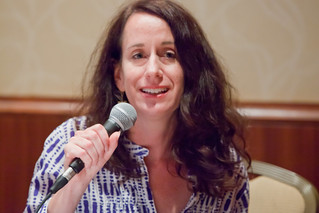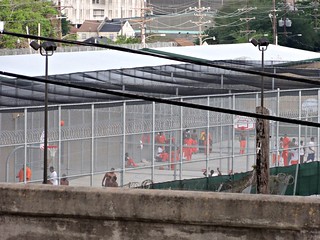Jaron Lanier, the computer scientist credited with popularizing the term “virutal reality,” spoke at Personal Democracy Forum on Monday about how to avoid a cyberplutocracy. These are some ideas from his talk.
Democracy requires openness, fluidity, and freedom of speech but these are not enough. Democracy also needs a strong middle class. Without a bell-curve-like distribution of clout, the nominal right to petition our government is of limited use.
So, where does middle class clout come from? The pre-high-tech economy was marked by Gilded Ages and races to the bottom. There were huge social struggles in which middle class people fought to achieve some measure of material stability. In each case, they created some small barrier to the flow of money: academic tenure, taxi medallions, unions, and copyright. Lanier calls these barries “levees.”
These levees are concessions to biological realism–aging, illness, the need for time off to raise a family, and so on. In order to have dignity we have to have some constancy. These levees provided a modicum of weath as opposed to income for middle class people. “So you don’t have to earn every single day anew, you don’t have to gig live every day,” Lanier, a former professional musician, explained.
The wealthy build wealth easily in our system through capital gains, dividends, interest, and so on.
Levees used to maintain the balance of power. In the modern, high-tech, networked economy, the wealth side suddenly got more fluid. Companies could suddenly network all this information from all over the world to put themselves in a much better information position relative to everyone else. The concentration of wealth accelerated. The 1% used their increased power to dismantle as many levees as possible.
Some people think we can use the power of petition, which is enhanced by networking, to restore the balance of power in the networked age. The problem, according to Lanier, is that you can’t fight wealth concentration with petition alone.
Lanier sketched an alternative vision for building up middle class wealth, based on the work of Ted Nelson. Nelson envisioned a system for mashups and remixes that would keep track of all the source material and deliver micropayments to the creators. Lanier envisions this system as a way to create robust long-term middle class without levees. Google translator stated with examples of good translation by translators. Under a Nelsonian system, all original provders of good translation would get micropayments. Any internet user who is living a good life, or skilled at something (mixing drinks, curing diseases, making hotel reservations) is being watched online by many cloud algorithms that use her behavior as an example. We are being studied, but we aren’t getting compensated for our creative efforts. Lanier is arguing, in effect, that we should all get royalties.
It was a fascinating talk, even though Lanier didn’t explain how a Nelsonian royalty system could come about in a world ruled by the 1%. He’s working on a book about these ideas. I look forward to reading it.








